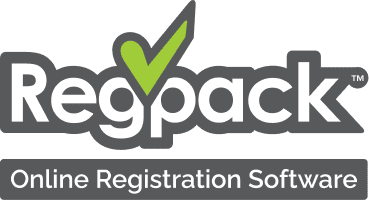In Part 1 of our Reporting Lowdown series, we went over what a report is and how dynamic reporting creates meaningful and useful reports for you and your team. Below we go over online registration software reporting tools and what a great and dynamic report looks like, including different features that optimize a dynamic reporting system that you create. Dynamic reports are only possible with a quality online registration software that allows you to collect, filter and manage your data in a dynamic and intelligent way, which then makes creating these reports possible!
Online Registration Software Reporting Tools: Less is More
Reports exist so the reader doesn’t have to sort through tons of information in order to get what he needs. It’s meant to synthesize a lot of information into something digestible. So when creating a report, no matter who it’s for or what kind of information the report contains, less is always more.
Reports that are confusing, don’t make sense and leave the reader just as uninformed as he was before reading, or worse, even more confused, is not the desired outcome. You just wasted your time preparing a document as well as the reader’s time reviewing it. Make sure the underlying message of a report is highlighted and easy to glean quickly. Emphasize main points and data you feel are more important and that the reader should be most aware of. In some cases, including a 1-3 sentence summary at the top or bottom is helpful since it allows the reader to understand the intent and focus of the data he is looking at.
Reports On Demand
With an intelligent online registration software and database, reporting will never be the same for you or your team. With paper applications or basic and standard online databases, reports tend to be static, flat and uncustomizable (that’s definitely a real word, just ask those Oxford people)!
Reports should give you what you need, whenever you need and however you need it. While this concept sounds like something only achievable in the 22nd century, it’s possible today with the right tools. With a powerful filtering mechanism as part of your database, generating a report on any data, big or small, is a cinch. A report shouldn’t be a static thing or even a dynamic unit changing according to user preferences. It should be a tool to get only the information you need. And once you have that information it should be able to show you statistics and totals on that information!
Powerful Filtering
Dynamic reports should be customized and filtered to your specific specifications. Normally when you think of a report, you think of it as a document showing a list of some sort. A report on “all the people that ordered product x”. The report is often rigid and doesn’t offer much more beyond a list of people or numbers. It’s time to take reporting a step further. With an incredibly versatile and complex filtering mechanism, you can filter exactly what you want and nothing more. This powerful filtering options allows you several different views of your data that help you see only the information you want and need.
With a database that can produce a report using real time and updated information, you are not only receiving a report based on accurate information but a report tailor-made for your criteria. In the past you might have had one or a few excel documents packed full of information requiring you to sort through it, and then copy and paste columns and rows into a new document. Then it’s only possible to generate a new document with this “filtered” data and maybe if you’re fancy, convert your excel into a PDF to email, print, etc. Suddenly you are stuck with a document that can be subject to being deleted all together or rows and columns getting mixed up. Add to that, reports become useless after a day or two due to outdated information, which means you’re back at square one copying and pasting new, updated data into an updated report. All these lines, rows, columns and updated versions of the same static report will probably make your head spin. And before you say anything, Google Docs is not the solution to this problem!
With a smart online registration software, filtering possibilities are endless. With a smart and flexible system you can call up a list of all applicants that ordered product x and are arriving on the same day. From that list, filter again to receive the data you need – say their full name and email address. Generate a new report quickly from the same pool for a different set of information. With this kind of flexibility, you can create a variety of filters and put together an amazing and varied amount of information for every member of your team. Use these reports to improve communication with applicants by targeting the appropriate people to receive correct and important information. Properly prepare for the arrival of applicants to your programs by making sure all people, needs and requests are accounted for and there are no surprises for your team.
You’ll save time because you’ll be managing your data more easily and effectively!
Flat Reports vs. Multidimensional Reports
Think of a flat report like those dreaded excel sheets discussed earlier. The problem with those kinds of “reports” is that too much data is concentrated into one document, where it tends to repeat itself and isn’t all that helpful to you or anyone reading it. Imagine a list showing all users and all the products they have ordered. So for Program A you have 4 products – the program itself, optional housing, optional weekend trip and optional language instruction. The report will go on to show for each user, which products they have selected. In this example, the flat report isn’t so bad since there are only a few products being offered. However, what if you have 20 products, or even 100? Your awesome little excel list has now become an unmanageable report, with tons of columns and information that just don’t make sense and are overwhelming to sort through. A system that enables you to see information on a product to product basis cannot be achieved through flat and static reporting methods.
A multidimensional report, achievable through a database with “information on demand” capabilities, will net you the data and information you need minus the confusion. You will be able to group sets of data and user information together according to the products you want to see and what you need to know about any group of applicants (or set of data) you choose.
Data From Anywhere
A small yet sometimes overlooked necessity of any system described above is the ability to access your data from anywhere and by multiple people at the same time. By having your data online and stored in a (secure) cloud database instead of in excel documents on a main server in your office does wonders for making reporting even easier and stress-free. Knowing your information is available to you and that it can be filtered on location or even at home, makes doing your job that much easier. As information is constantly being updated and/or changed you can be sure that when you need the most updated and accurate information all you have to do is filter, export and move forward with your data from anywhere.
So what’s the deal with reports again?
The whole point of our “Lowdown on Reporting” series is to show you how reporting is an integral part of your business. A sophisticated online database with powerful filtering capabilities makes your job easier, saves you time and provides excellent, useful and clear reports for you and your entire team, from your boss to your interns. Reports shouldn’t be a flat or static thing. They should be dynamic and multidimensional. They should give you a picture of the data you want and need to see, and nothing more. They should provide any combination of data you could ever dream of, and then some. And most importantly, they should be easy!
What you’re doing now might be working just fine. And that’s great. But think of what a system described in this post can provide you and your team and how that would increase productivity, accuracy and team communication?
If you missed Part 1 of this series, check it out now.
Do you have a system set up like this? Do you have certain parts but not the whole enchilada? And do those separate parts work well for you or are you drooling over a new system with all these features? Tell us what you think in the comments below.

















